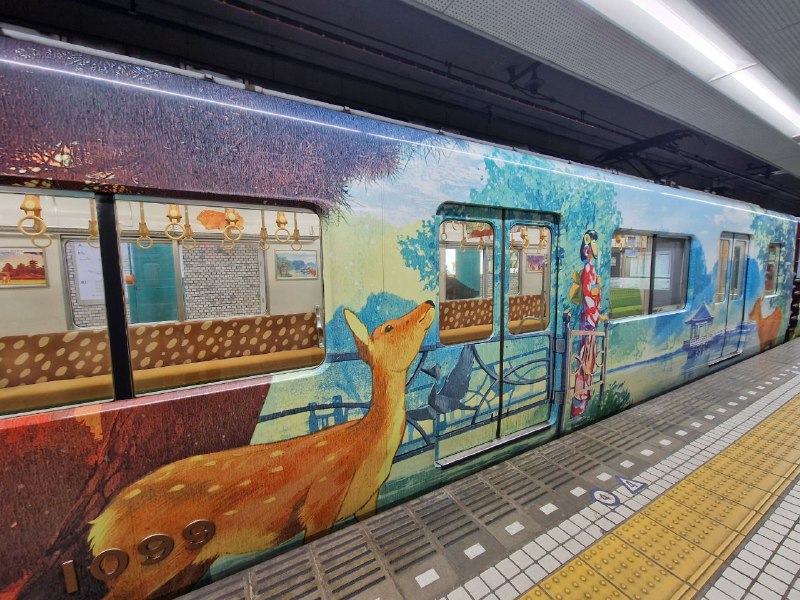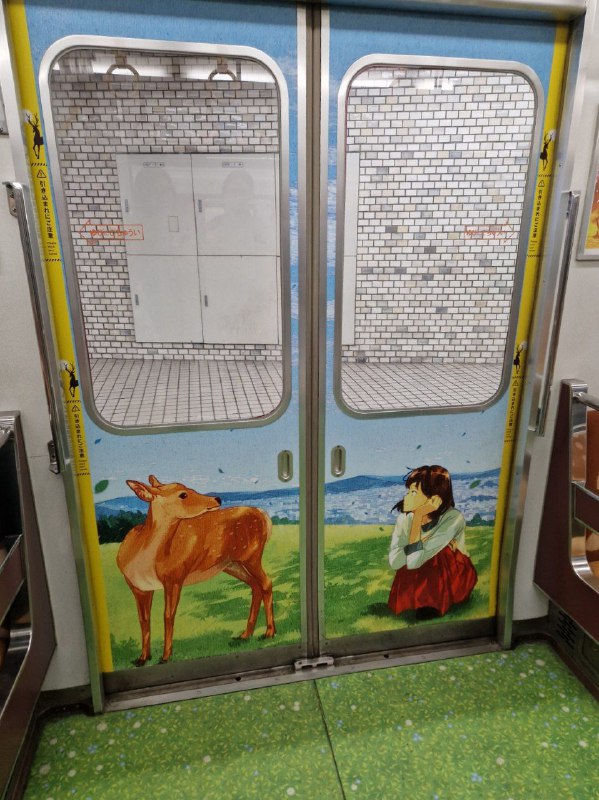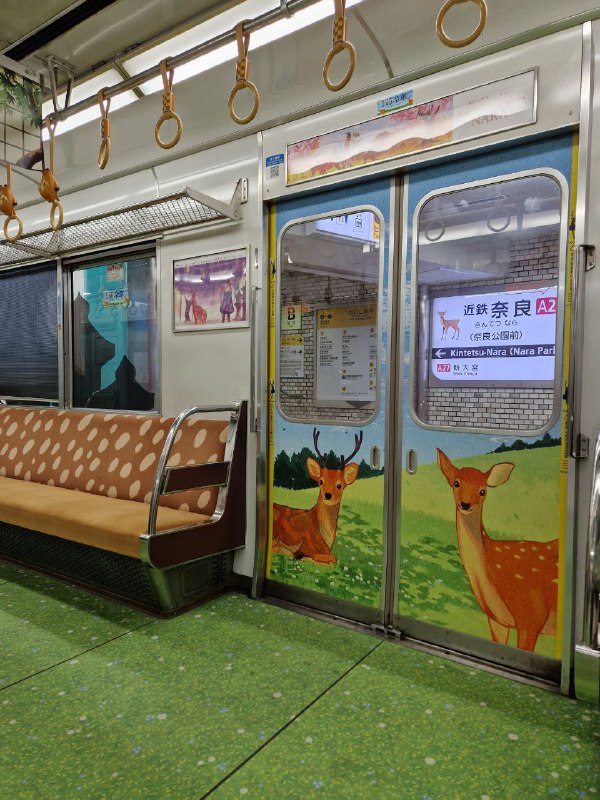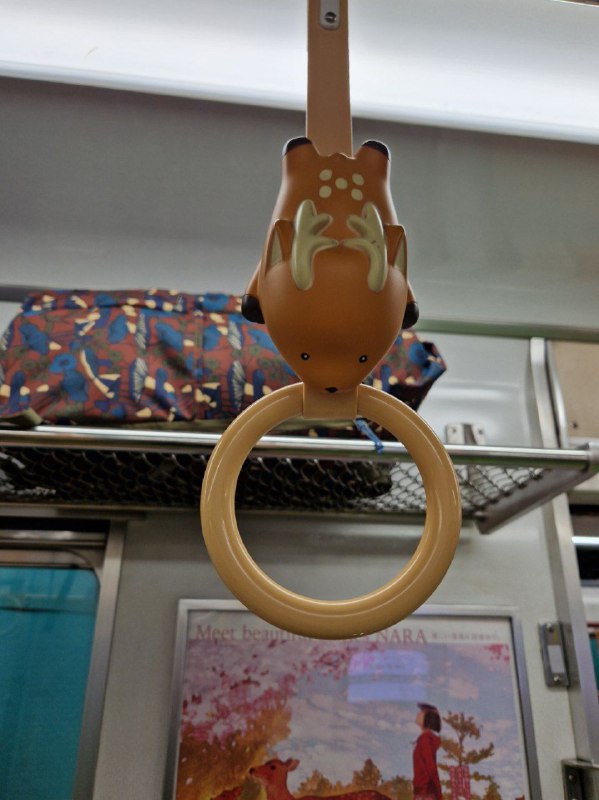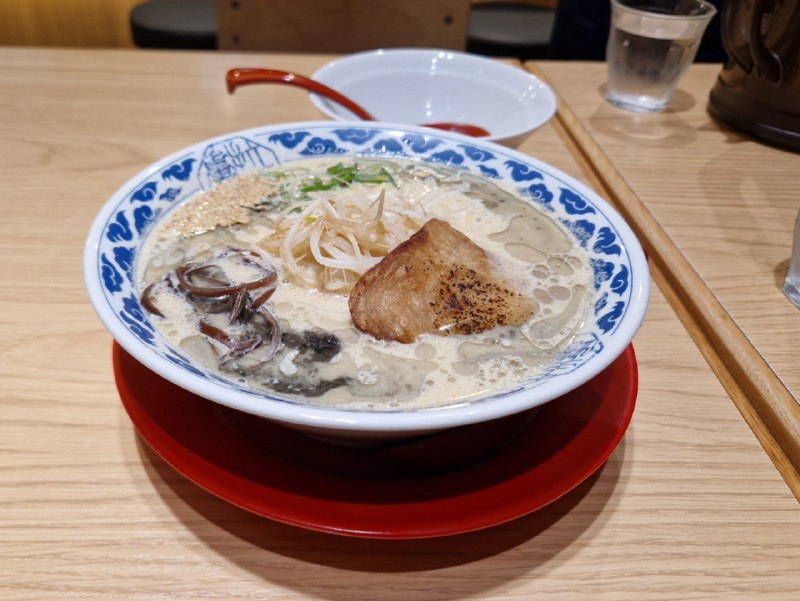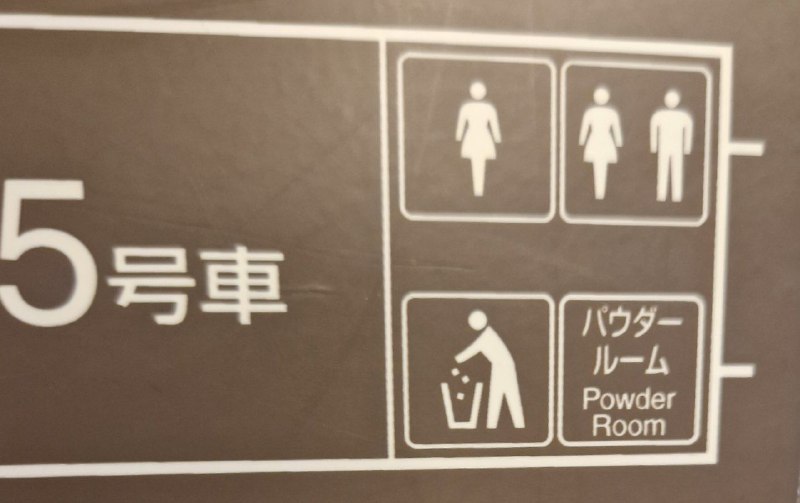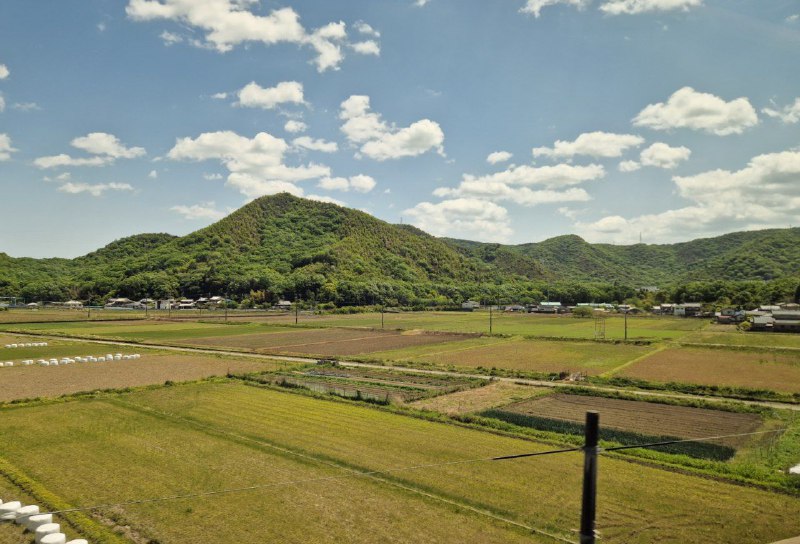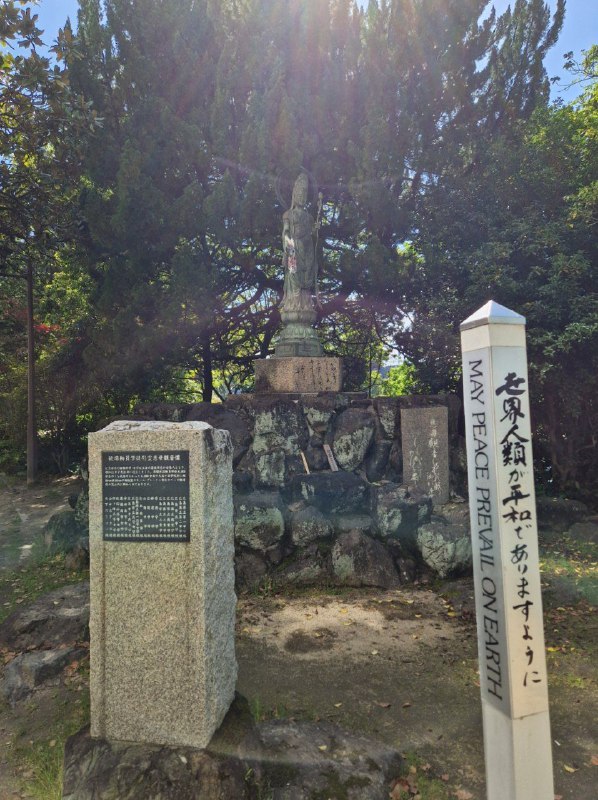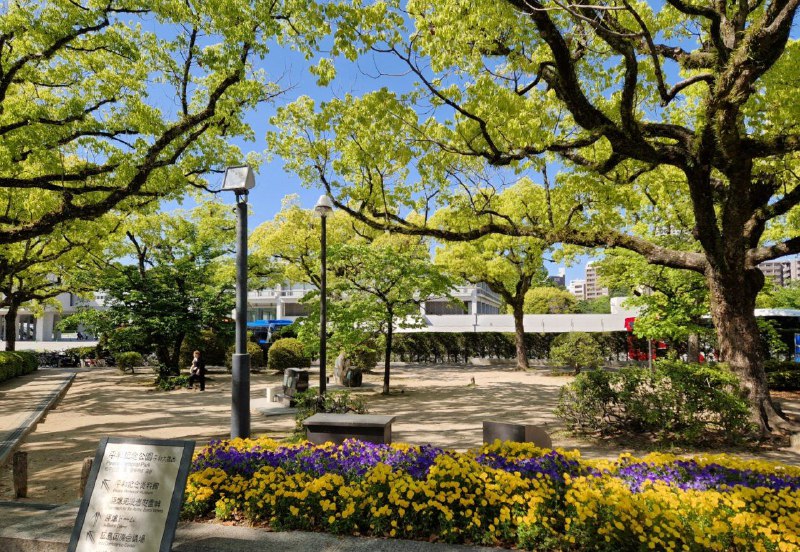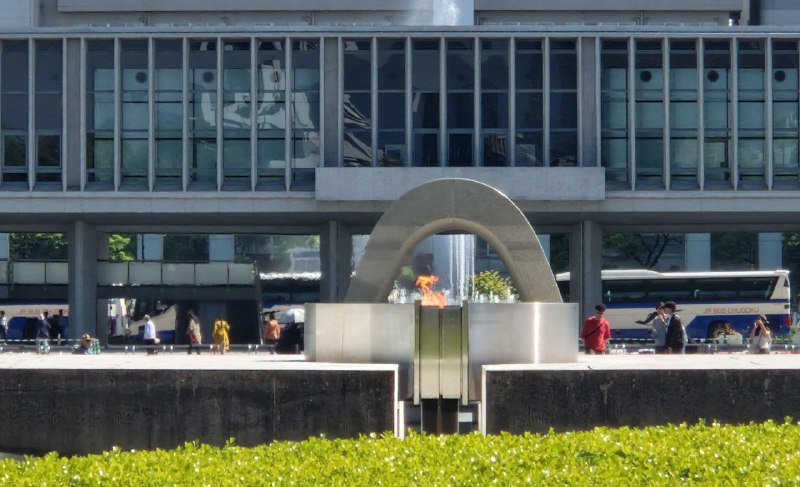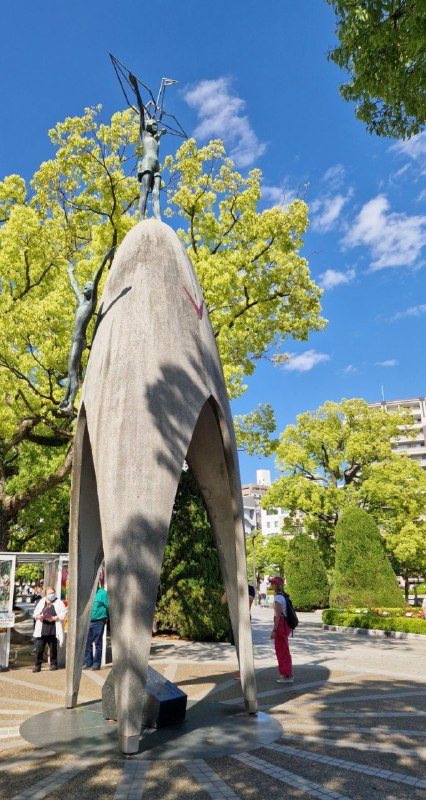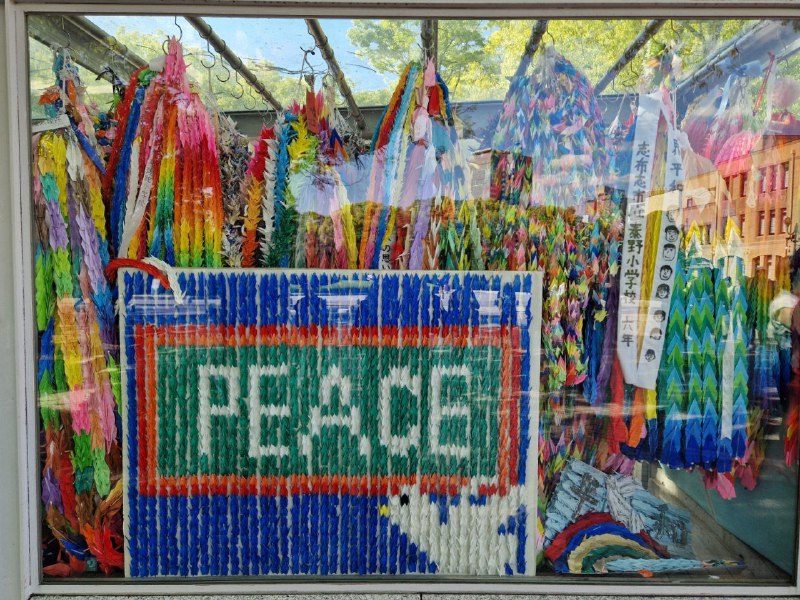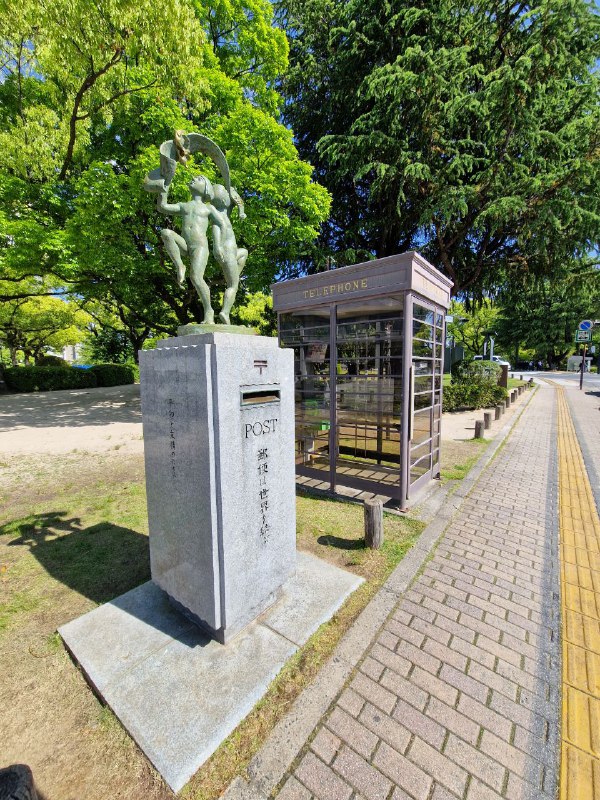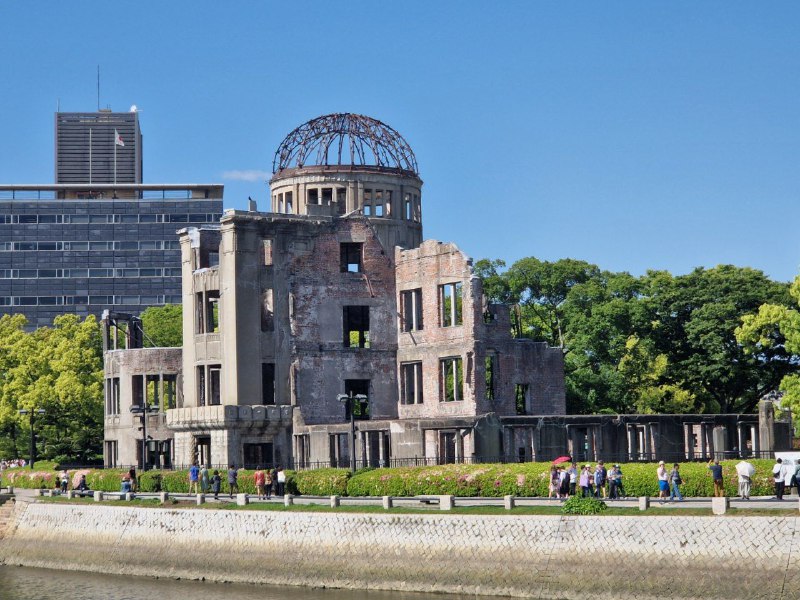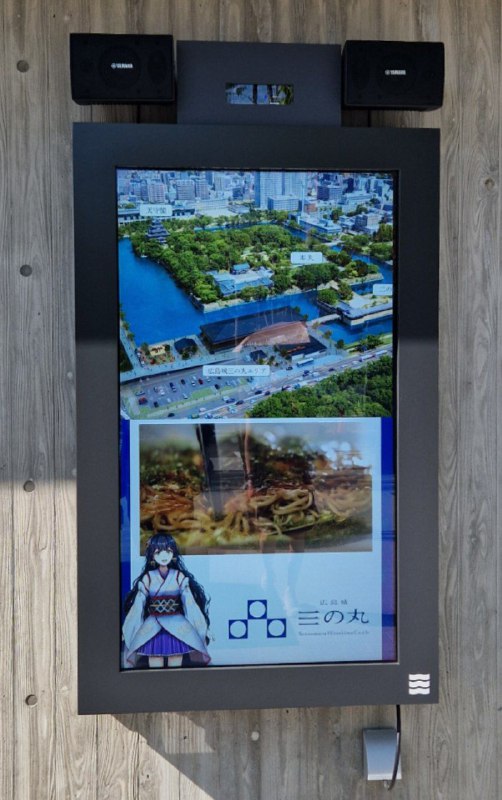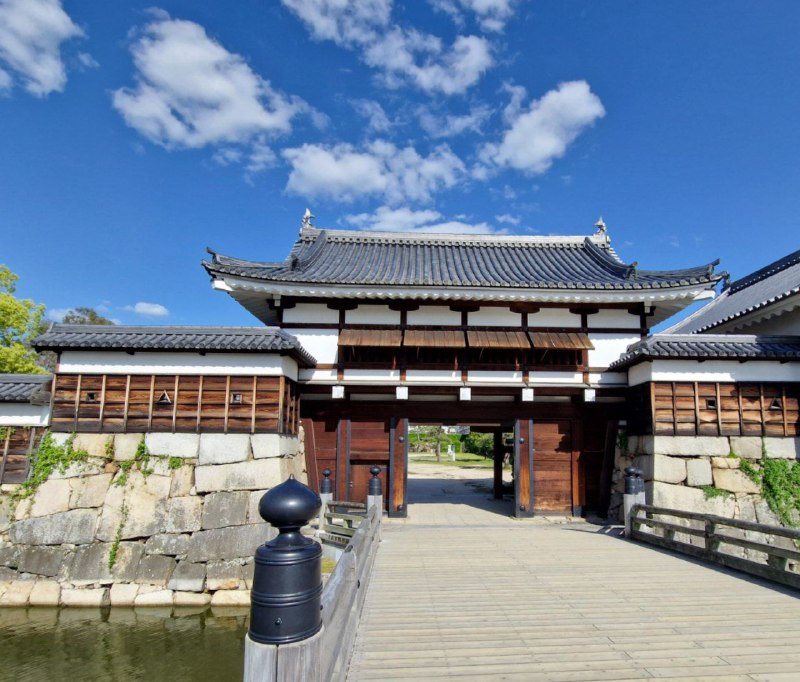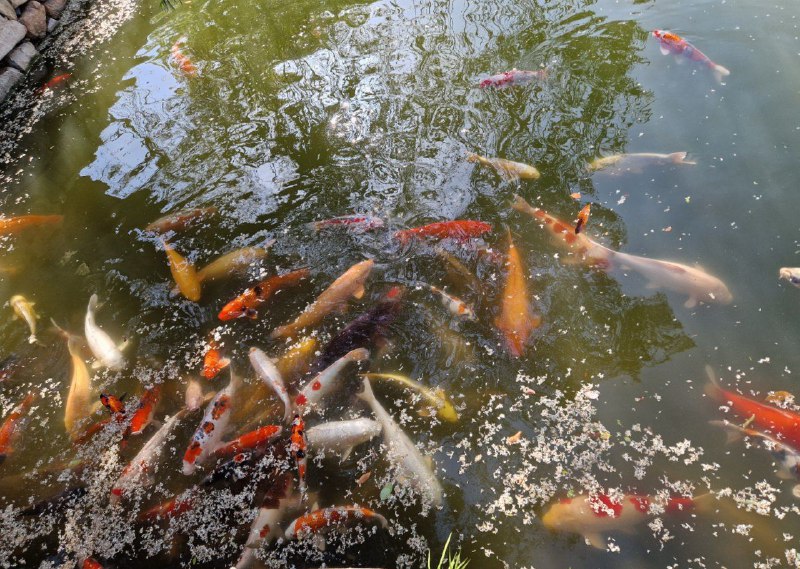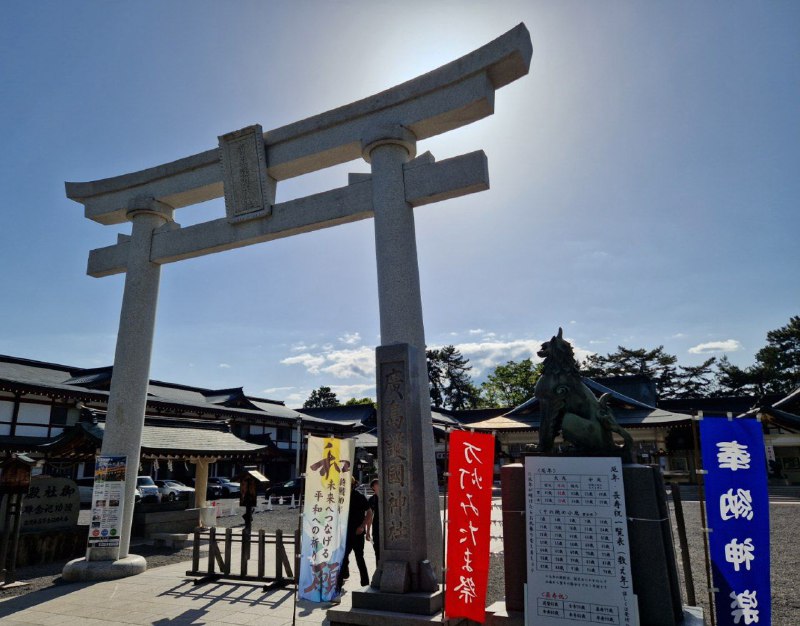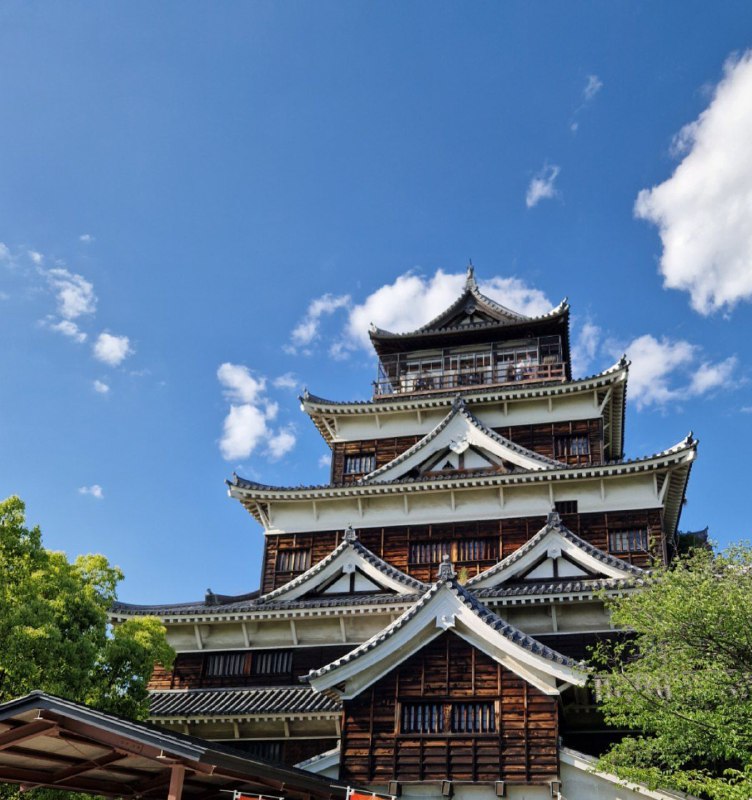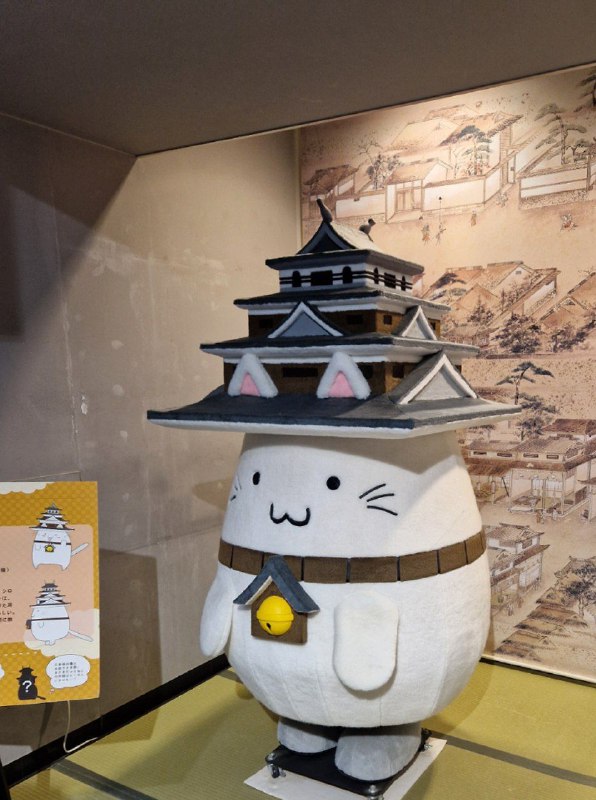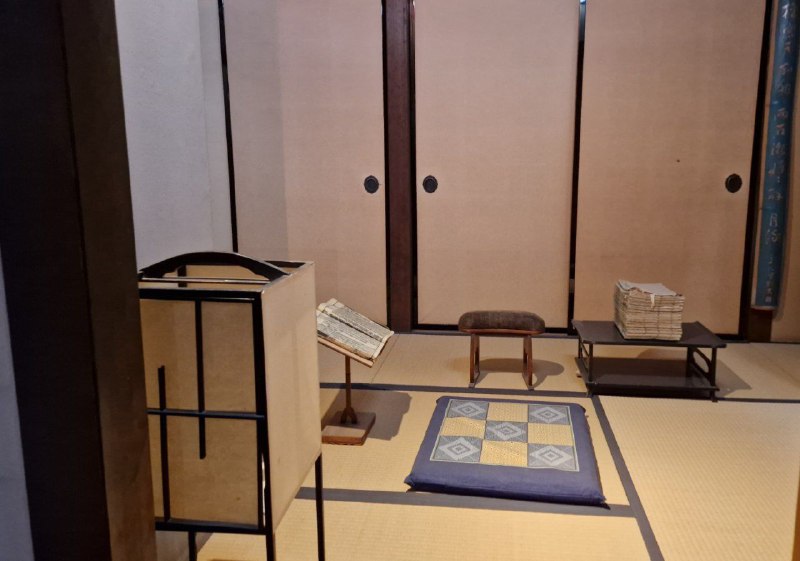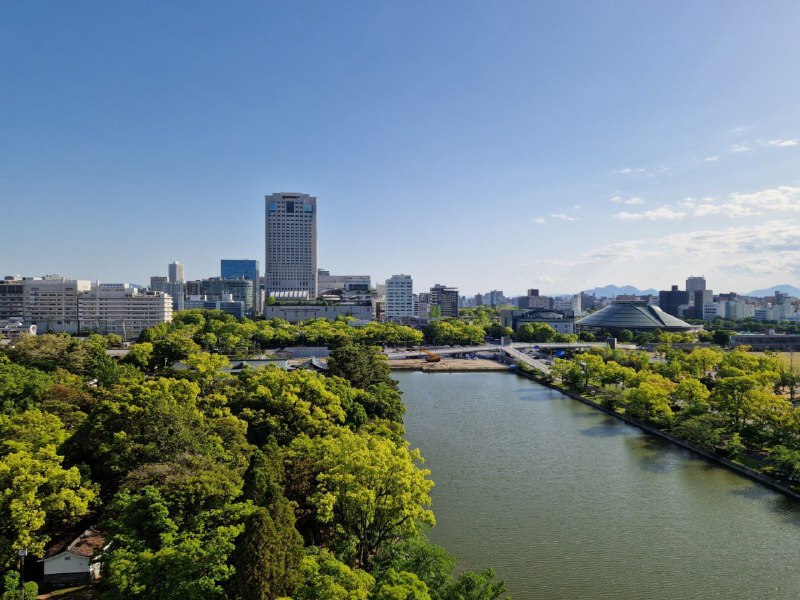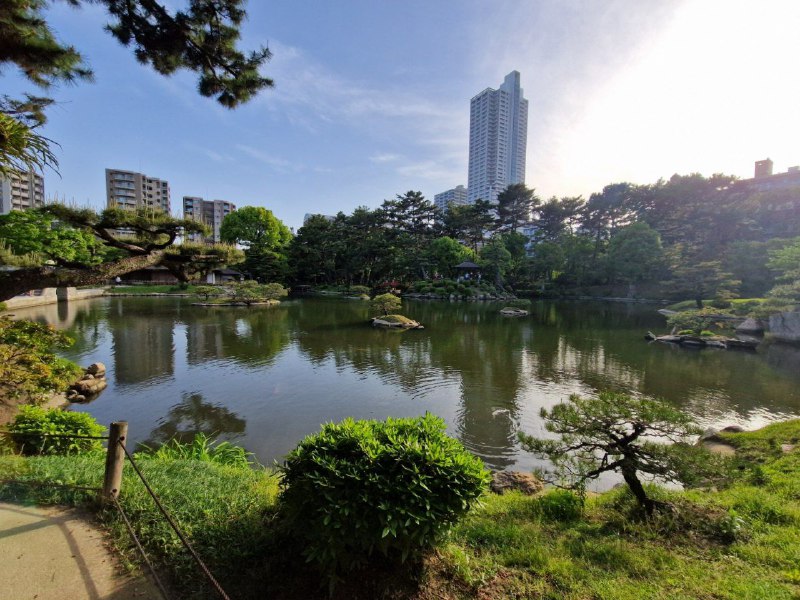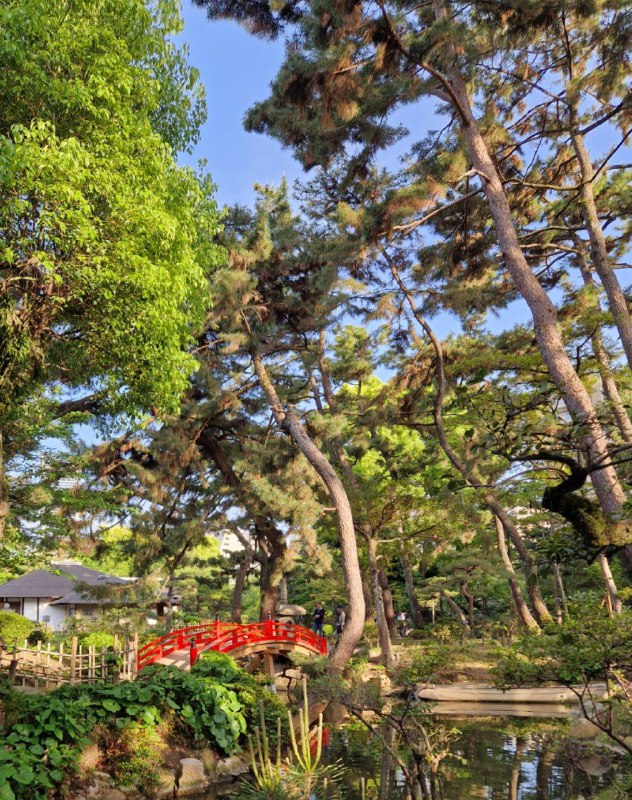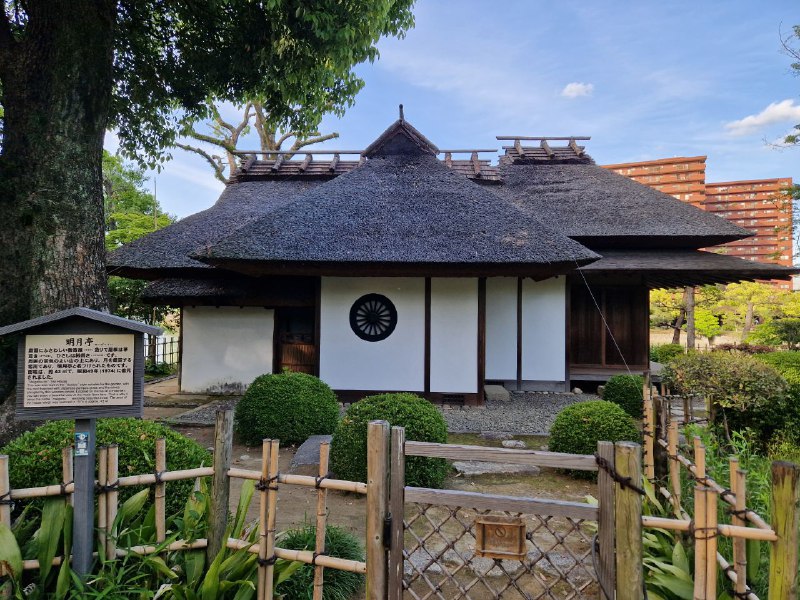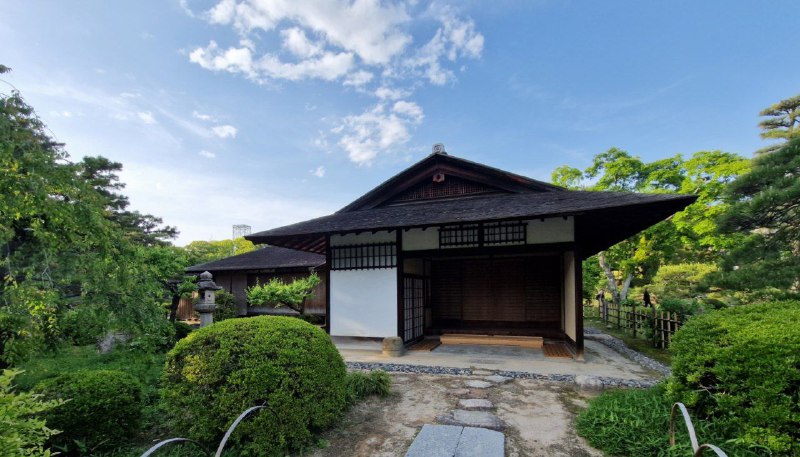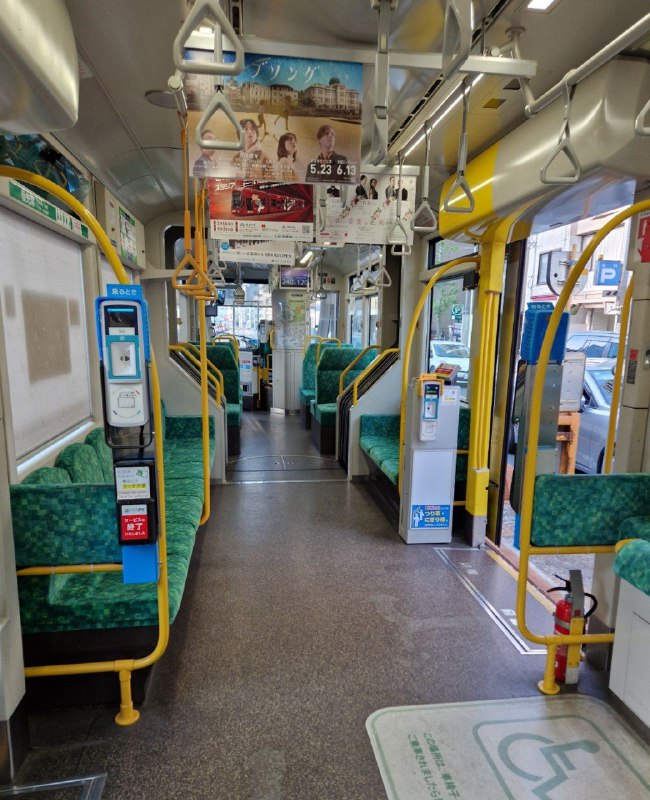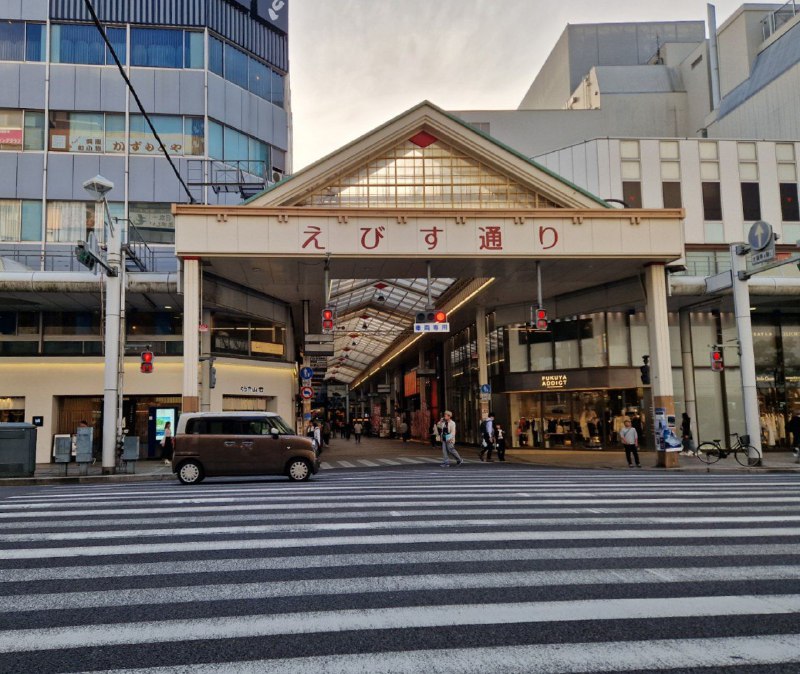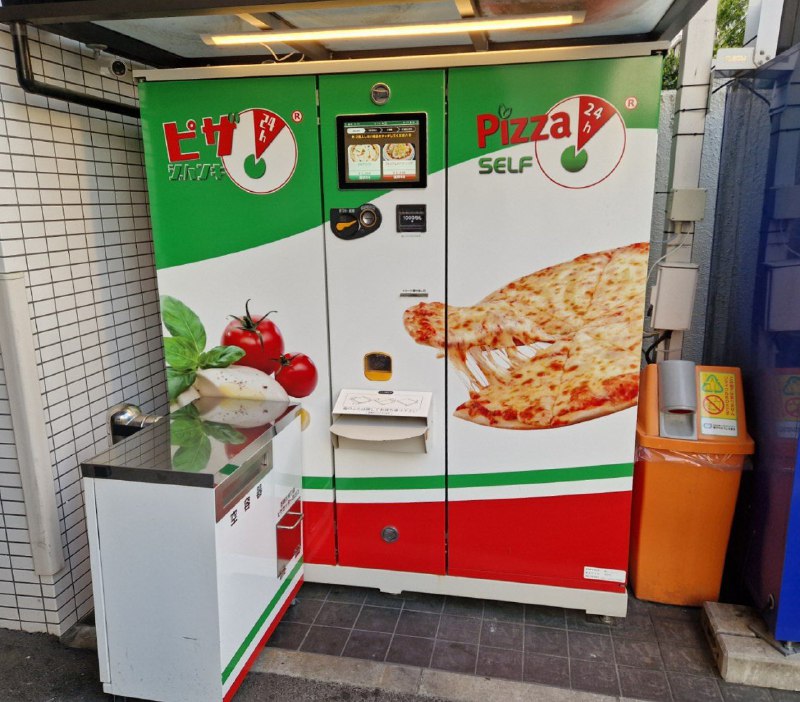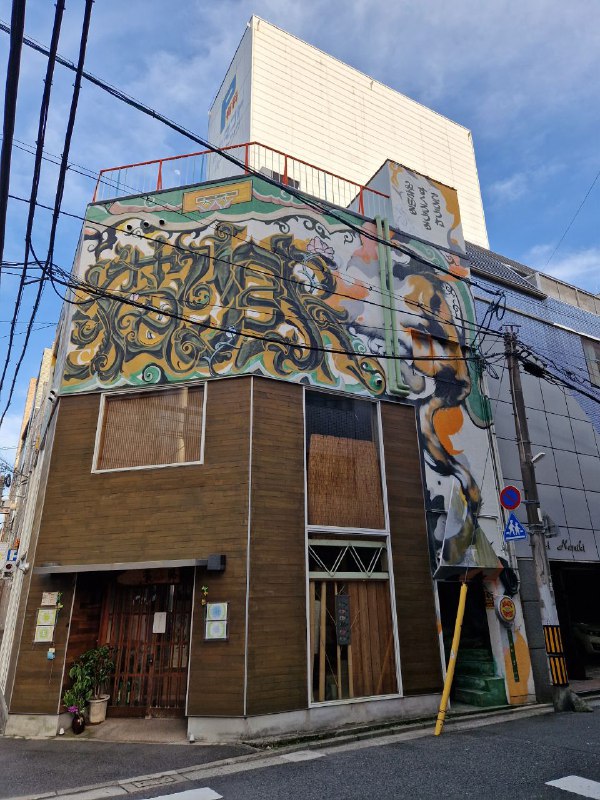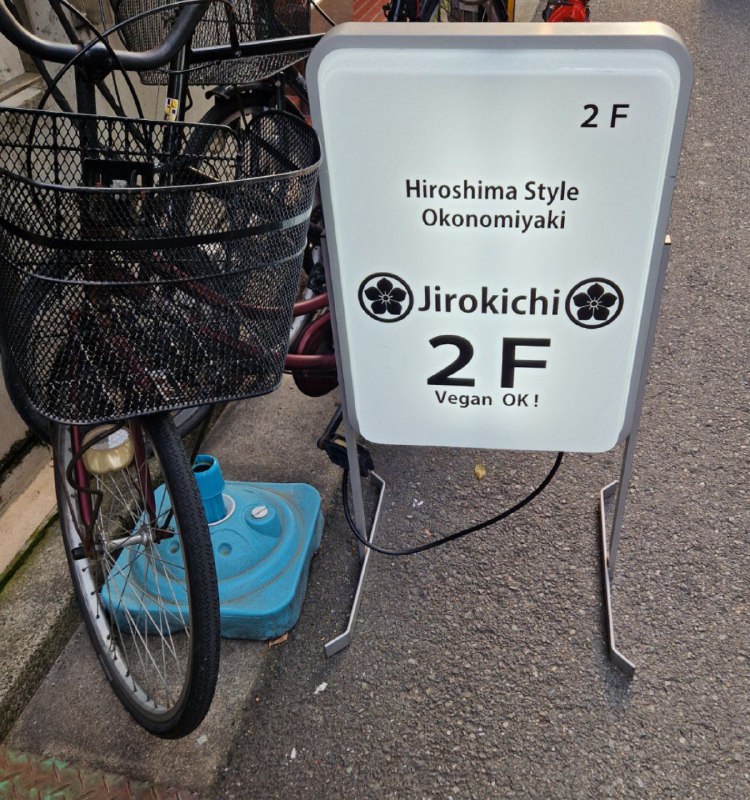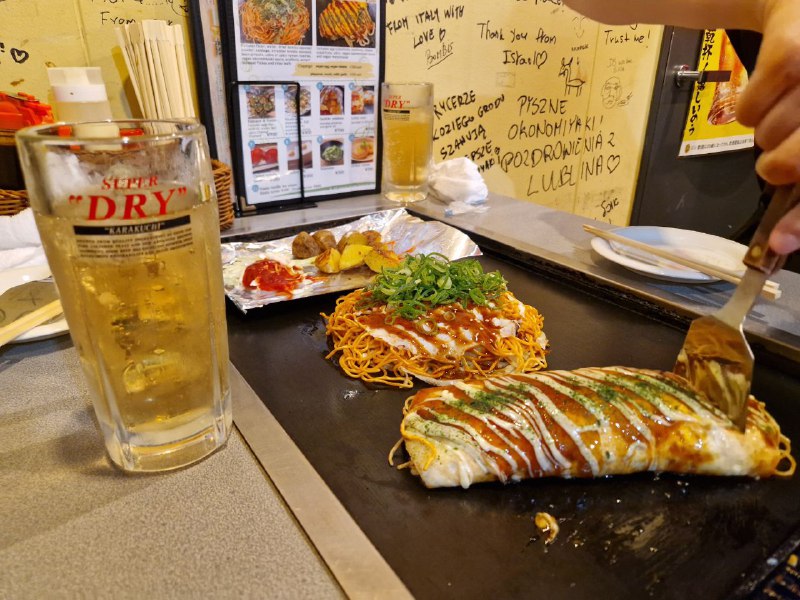Lag train (kintetsu, "nearby railroad") from
Nara is pretty. Starting from Uji we aren't stopping anywhere for more
than one night. It's regrettable, but getting even three weeks in Japan
was difficult.
There's tasty vegan ramen at the Shin-Osaka station, huh!
Many toilets are marked as 化粧室、"make up room", but seeing a "powder room" is a first.
Today: Hiroshima. You all know the name of the city.
It used to be a fishing village, then feudalism
came in the 16th century, and made it a seat of a feudal lord. Then
Meiji abolished feudalism, and the village eventually became the largest
city in the southern part of the island. Meiji moved the office of the
Imperial Army here; the city played an important role during the many
wars, until it was basically obliterated by an American nuclear bomb.
Over 70,000 people died very fast, and then another 70,000 died shortly
after the blast. 80% of the buildings were destroyed in the blast and
the fire that followed.
The truth about the bombing was hidden by the
Americans for a few years; the collective trauma couldn't be properly
processed for a long time. When the city started to rebuild in the
1950s, it was decided to place a Peace park in the center.
The peace park has a fire memorial and a fountain that line up perfectly
There is also a memorial for children who died
In fact, the overwhelming majority of people who perished in the blast were civilians. This is tragic.
There are endless cranes around the monument; people keep sending new cranes to Hiroshima.
There are endless cranes around the monument; people keep sending new cranes to Hiroshima.
The Peace City has an unusual post box to remind everyone that staying connected saves lives.
An important monument at the park is the Atomic Bomb Dome.
The building originally was an exhibition hall of sorts. It has happened to be very close to an unusual T-shaped bridge that was chosen as a target for the bomb. The bomb missed by 200-something meters, and exploded on top of this dome. The blast force was directed downwards here, so the walls of this building, and this building alone, stayed intact.
Some argued that this building must be demolished, but it was decided to keep it as a reminder to never ever ever use WMD ever again.
The building originally was an exhibition hall of sorts. It has happened to be very close to an unusual T-shaped bridge that was chosen as a target for the bomb. The bomb missed by 200-something meters, and exploded on top of this dome. The blast force was directed downwards here, so the walls of this building, and this building alone, stayed intact.
Some argued that this building must be demolished, but it was decided to keep it as a reminder to never ever ever use WMD ever again.
Hiroshima castle is fairly close to the park,
and it's definitely a major attraction. There's a display with a VTuber
showing a guided tour around the castle grounds!
The castle grounds are, obviously, replicas.
They're based on the numerous photos of the castle taken since it was
designated a National Treasure in 1931 (or so?)
The castle moat has swarms of koi carps.
Obviously, there's a shrine next to the castle.
The castle is tall; it seems to be mostly
wooden. It was build in the 16th century as the seat of the feudal lord,
and it was in a good order until the bomb. It collapsed as a card
house, but didn't catch fire.
The castle has an adorable mascot. Inside, it's just a museum, not a castle. It's full of old swords, ancient pottery, and such.
There are replicas of the castle rooms, though.
An observation deck on the fifth floor shows
you the real Hiroshima. In 1945 it was industrial, and a home for just
300 thousand people. Today it's a megapolis full of modern economic
activity. There are shipyards, though.
Shukkeien garden is a few minutes away from the
castle. It was built as a villa for the feudal lord; during Meiji era
the grounds were used as an imperial residence in Hiroshima, when the
emperor needed to visit the Imperial Army headquarters.
It was designated a public park during Showa (in 1940, if I'm not mistaken), got destroyed in the bombing (obviously), and rebuilt shortly after.
It was designated a public park during Showa (in 1940, if I'm not mistaken), got destroyed in the bombing (obviously), and rebuilt shortly after.
Shukkeien is best enjoyed by walking around it.
The garden has a very pleasant, calming feel about it. However, it was
planned before cameras, and doesn't cater to painters, either. So, there
aren't that many spots where one could take a pretty photo.
The garden was designed by Ueda Soko, a warlord serving to the Hiroshima's lord. Ueda Soko is best known for creating a special type of tea ceremony - Ueda Soko Ryu, which is a warrior class school of tea ceremony. The school traditions and the clan continue for some 400 years.
If you're wondering why there's a warrior school of tea, consider this: a group of samurai gets together to enjoy the tea. How does one stays polite to everyone and gets them to enjoy the tea ALL THE WHILE being on a lookout for a massacre? The performers of the tea ceremony in this tradition used to carry a sword on them, ready to defend (or fight) the guests at any time. The guests probably have their own swords, too. This would change how the tea ceremony is done, wouldn't it?
The garden was designed by Ueda Soko, a warlord serving to the Hiroshima's lord. Ueda Soko is best known for creating a special type of tea ceremony - Ueda Soko Ryu, which is a warrior class school of tea ceremony. The school traditions and the clan continue for some 400 years.
If you're wondering why there's a warrior school of tea, consider this: a group of samurai gets together to enjoy the tea. How does one stays polite to everyone and gets them to enjoy the tea ALL THE WHILE being on a lookout for a massacre? The performers of the tea ceremony in this tradition used to carry a sword on them, ready to defend (or fight) the guests at any time. The guests probably have their own swords, too. This would change how the tea ceremony is done, wouldn't it?
The tea rooms in the garden are closed for visitors.
This is the Emperor Villa (replica, of course); it's smaller than one would expect.
Hiroshima has the longest tram network in
Japan, Hiroden (HiroShima DenTetsu, "Hiroshima Railroad"), running since
1910. Impressively, the atomic bombing stopped the service only for
three days! Only 15 trams survived the bombing, but two of those
survivors are still in use, carrying passengers around. Most of the
streetcars are modern, of course.
The new trams are very comfy
Central Hiroshima has a grid of shopping
streets, the coolest of them is Hondori ("main street"), but Ebisudori
("Ebisu street") is just as big. There are all sorts of hip shops
around, and massive massive massive zebra crossings.
Pizza vending machine! Huh
A pretty graffiti. Hiragana on the right
probably says "Here it goes, here it falls, missile". There's a word
written in kanji, but I have no idea what it says. It's not "the bomb".
Hiroshima is blessed with vegan food options;
many restaurants have vegan menus. We're here for Hiroshima style
okonimyaki, also known as Hiroshima-yaki.
The idea of okonomiyaki ("fried the way you
like it") is very simple. Get whatever ingredients you want, mix them so
they would stick together, and serve them right from the hot platter.
Okonomiyaki became popular after the WW2 as a cheap meal. Each vendor
would cook their okonomiyaki with what they had, and they usually had
what they liked, hence "fried the way you like it".
There are two types of okonimyaki. Osaka okonomiyaki is the default version; the ingredients are mixed with the batter, and cooked as an omelette. Some call it "Japanese pizza".
Hiroshima okonomiyaki are different: after the thin pancake is prepared, the ingredients are layered on top of each other, not mixed. Hiroshima okonomiyaki usually have 3-4 times more cabbage than Osaka's. In Hiroshima, noodles also go in!
The dish is often cooked by the guests on their hot plates, but at this place the chef cooks okonomiyaki for everyone. The etiquette is to use the spatula to cut a square piece of the dish and put it in your mouth
There are two types of okonimyaki. Osaka okonomiyaki is the default version; the ingredients are mixed with the batter, and cooked as an omelette. Some call it "Japanese pizza".
Hiroshima okonomiyaki are different: after the thin pancake is prepared, the ingredients are layered on top of each other, not mixed. Hiroshima okonomiyaki usually have 3-4 times more cabbage than Osaka's. In Hiroshima, noodles also go in!
The dish is often cooked by the guests on their hot plates, but at this place the chef cooks okonomiyaki for everyone. The etiquette is to use the spatula to cut a square piece of the dish and put it in your mouth
It's kind of cool that the density of
vegan-friendly places in Hiroshima is much higher than in Tokyo and
maybe even than in Osaka!
